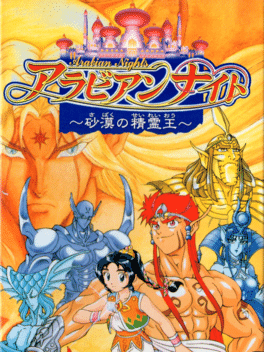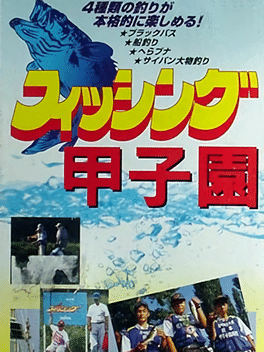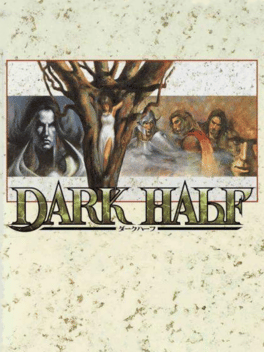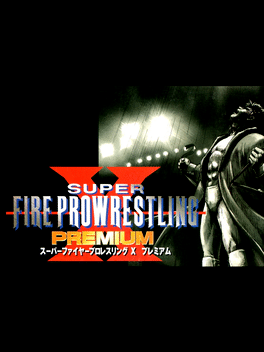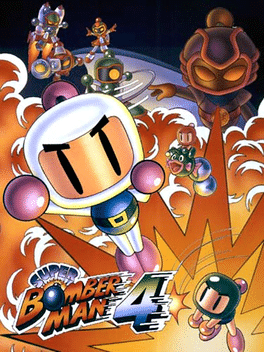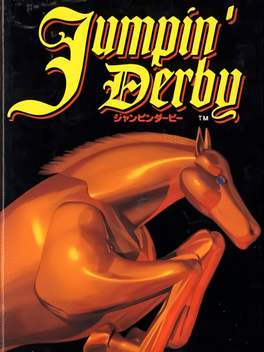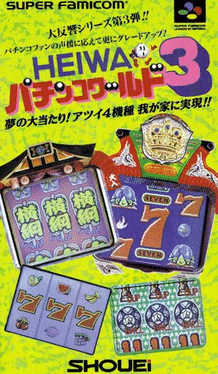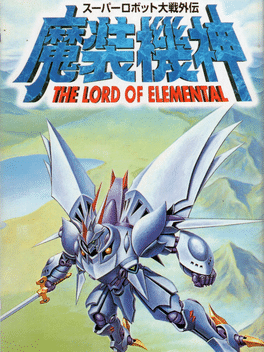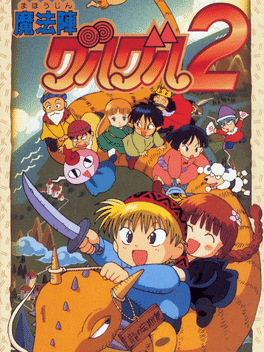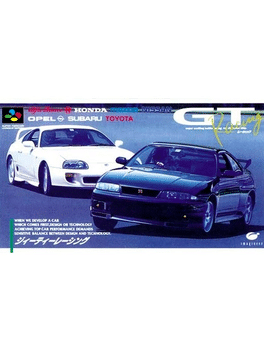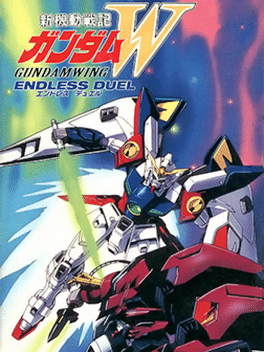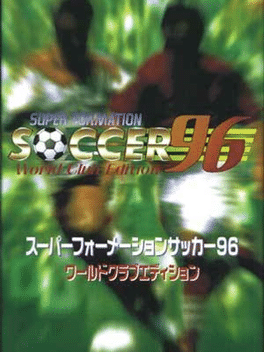New Super Famicom Games - Page 7
-
Best Shot Pro Golf
1996
Best Shot Pro Golf
1996
Best Shot Pro Golf is a Sports game, developed by Kid and published by ASCII Entertainment, which was released in Japan in 1996. -
Arabian Nights: Sabaku no Seirei-ou
1996
In this Japan-exclusive Super Famicom game, the player assumes the role of an orphan named Shukran, who is accompanied by the djinn Ifrit on her adventures to bring peace to her desert homeland. -
Fishing Koushien
1996
Fishing Koushien
1996
Fishing Koushien is a Sports game, developed by A-Wave and published by King Records, which was released in Japan in 1996. -
J.League '96 Dream Stadium
1996
J.League '96 Dream Stadium is a Sports game, developed by AI and published by Hudson, which was released in Japan in 1996. -
Dark Half
1996
Dark Half
1996
Through the Light came the Darkness, and through the Darkness came the Light. They were inseparable in the beginning, and gave birth to each other. Rukyu appeared before all the other creatures, the great demon of darkness, later to be known as the Satan. The divine hero-god Roda went up to his dark realm to defeat him, but was struck down, and presumed dead. But the hero couldn't die so easily: he swore to defeat Rukyu once and for all. Meanwhile, Rukyu doesn't just stay in his realm, waiting for Roda: he goes out to the world as a death-bringing sorcerer, and he is out for Roda... The game is quite different from most other RPGs, because it lets you play as both the "good" hero and the villain. The game is divided into chapters, and each chapter is played by either Roda or Rukyu. You switch the two heroes chapter-after-chapter, and lead them to their ultimate battle from two opposite sides. The entire game, including the battles, is viewed from an isometric perspective. The battles are random and turn-based, and -
Super Fire Pro Wrestling X Premium
1996
In this final appearance of Fire Pro series on 16-bit consoles, the usual roster of over 150 wrestlers from several wresting promotions worldwide including several styles from Shoot or Pancrase to American and Lucha are joined by 80 Create-a-wrestler slots, plus secret wrestlers such as legends Gotch or Thesz or the roster of Blazing Tornado. While all fighters have fictional names, a lot of them are perfectly recognizable by their attire, stance and style. The CAW mode allows the player to create a wrestler from scratch, setting how they look (choosing face, size, clothing and setting colours) and fight, with several styles and stances available, as well as over 500 moves, each more suitable for certain styles and skills. To make them fight more realistically when controlled by the AI, the CAW mode also allows one to set move priorities. Five game modes are available, including World Championship (single and tag), Battle Royale, 5-man Elimination Mode, League Battle and the One Night Dream Match. There are severa -
Super Bomberman 4
1996
Super Bomberman 4
1996
star 8.1The fourth SNES game in Hudson's explosive multiplayer series sends White Bomber and Black Bomber hurtling through time. -
J.League Excite Stage '96
1996
J.League Excite Stage '96 is a Sports game, developed by A-Max and published by Epoch, which was released in Japan in 1996. -
Jumpin' Derby
1996
Jumpin' Derby
1996
Jumpin' Derby is a Sports game, developed by Kid and published by Naxat Soft, which was released in Japan in 1996. -
Super Kyoutei 2
1996
Super Kyoutei 2
1996
Super Kyoutei 2 is a Racing game, published by Nichibutsu, which was released in Japan in 1996. -
Heiwa Pachinko World 3
1996
Heiwa Pachinko World 3 is a Miscellaneous game, published by Shouei, which was released in Japan in 1996. -
Ippatsu Gyakuten: Keiba, Keirin, Kyoutei
1996
Ippatsu Gyakuten: Keiba, Keirin, Kyoutei is a Sports game, developed by Electronics Application and published by Pow, which was released in Japan in 1996. -
Parlor! Mini
1996
Parlor! Mini
1996
Parlor! Mini is a Miscellaneous game, published by Nippon Telenet, which was released in Japan in 1996. -
The Adventure of Hourai High School
1996
You assume the role of a student (whose gender you can choose) still aboard the flight towards the fictional Utsuho Island of Southern Japan, the location of the strangest school of the country: Hourai High School. This huge educational complex, which houses more than one million students and personnel (how is that even possible?), seems to acts as a magnet for weird youngsters and nonsensical events. And you get the privilege of a great start. Indeed, an irritated stewardess decides to send you to your destination via a shortcut... by throwing you out of the plane with a parachute. After a forced landing through a ceiling, here you are, at Hourai High School. The year hasn't started yet and teachers already have you in their sights. You'll get to meet new friends real soon however, particularly the guys behind the school's newspaper "Hourai Sports". You'll even get the chance to take the place of the editor, even though you are the one who sent him to hospital by landing on his head. But the course of your new sc -
Mahoujin Guru-guru 2
1996
Mahoujin Guru-guru 2
1996
Mahoujin GuruGuru 2 is a Role-Playing game, published by Enix Corporation, which was released in Japan in 1996. -
GT Racing
1996
GT Racing
1996
GT Racing is a Super Famicom racing video game where the player gets to drive a Gran Turismo car in either championship or practice mode. The game is based on the 1996 Super GT racing season using the horsepower standards and rules of the era. During championship mode, the player is asked enter a number, his or her driver's name, and the team name that he or she will use during the championship. The driver's name and team can be entered using either English or Japanese letters. When a player beats a record, he or she is asked to insert his or her number, name or initials (up to four characters and two digits for the number). Championship mode can last for multiple seasons. Playing ninety-nine seasons in a single racing career is theoretically possible due to the double-digit nature of the season information. There are eight different tracks, including the Suzuka Circuit that has been shown in video games since Pole Position II and Fuji Speedway (complete with a virtually photorealistic Mount Fuji in the background -
Shin Kidou Senki Gundam Wing: Endless Duel
1996
star 7.9It is the year After Colony 195, and war between the Space Colonies and Earth has begun. To give the colonies an edge, they send 5 young soldiers, trained to perfection, to earth in the most powerful of Mobile Suits-Gundams. With their arrival, the tide of the war changes as they battle against the Earth forces and the Colonies of their origin. -
Super Formation Soccer 96: World Club Edition
1996
Super Formation Soccer 96: World Club Edition is a Sports game, developed and published by Human Entertainment, which was released in Japan in 1996. -
Bishoujo Senshi Sailor Moon Super S: Zenin Sanka!! Shuyaku Soudatsusen
1996
This game is the sequel and an update to Sailor Moon S: Jougai Rantou!? Shuyaku Soudatsusen. The Sailor Senshi are fighting to choose a new leader. After defeating an enemy, Sailor Moon was teased by Sailor Chibi Moon and Sailor Mars, who called her undependable. The rest of the Sailor Senshi then decided to have a contest to choose a new leader. This game is based on the popular Anime series "Sailor Moon" and was released only for the japanese Super Famicom.

